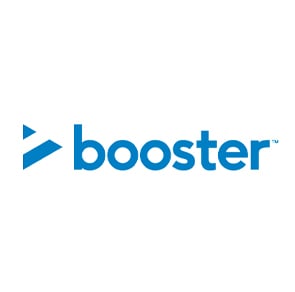Russell Moala-Mafi knows first-hand what happens when you overlook the importance of understanding KiwiSaver.
Ko e KiwiSaver ‘oku ne tokoni’i e kakai tokolahi ‘i Nu’usila ni ke fakatoli’a ‘enau fiema’u ke fakatau honau ’uluaki‘api nofo’anga.
“My first employer signed me up to a default provider when I was 18 – and that was that. It wasn’t until I was in my twenties that I bothered to find out who my KiwiSaver was with, what fund I was invested in, or even what my tax rate was.”
I found out that I had been investing in a default conservative fund, which was completely the wrong fund for me. It also meant I lost out on potential earnings had I been in a more appropriate fund based on my goals and my timeframe. And to add insult to injury, I’d also been overpaying my tax!
“That’s money I can’t get back.”
Since joining Booster, Russell is passionate about helping people understand KiwiSaver and make the right investment decisions for their personal needs.
Ki he tokolahi, koe Kiwisaver te ne toe lava tokoni ke nau ma’u ha mo’ui ‘oku toe lelei ange he taimi te nau retire pe nofo ai mei he ngaue, ‘o ‘ikai ke nau fakafalala ki he vahe penisoni pe ha tokoni fakapa’anga mei ha memipa hono famili.
“To many, KiwiSaver is a vague concept – something you see on your payslip or hear about in the media – but something that has no tangible bearing on day to day life.”
Russell, along with three colleagues, recently had the opportunity to share his KiwiSaver knowledge with the Pasifika community on NiuFM and PMN531.
“As Pacific Islanders, we know first-hand that there is a general lack of awareness amongst Pasifika when it comes to KiwiSaver.”
KiwiSaver is the means through which many New Zealanders can realise their dream of owning a first home – and for most, KiwiSaver will make the difference between a comfortable retirement, or one that is reliant on the pension or family members. So it’s important to me to help people understand how to make the most out of KiwiSaver.
As Russell points out, “From personal experience, I know how easy it is to overlook the importance of KiwiSaver. Today, there are still over 500,000 KiwiSaver members in default funds, and many others who don’t have KiwiSaver at all.”
“I’m on a mission to help change that.”
Ko ia ai ‘oku mahu’inga ke ke talanoa ki ho famili fekau’aki mo e Kiwisaver he’e ala tokoni ‘eni ki he ‘enau palani ki he kaha’u he taimi te nau retire pe nofo ai mei he ngaue.
To help you out, here’s Russell's guide to the most common questions he gets asked about KiwiSaver.
What is KiwiSaver?
KiwiSaver is designed to help Kiwis save for retirement, but can also be used to help purchase your first home. You can make regular contributions from your pay, and you can also make voluntary contributions on top of this.
To help you along, you can receive additional benefits, such as annual government contributions.
KiwiSaver is just run by the government, isn’t it?
No! That’s a common misunderstanding. Although KiwiSaver was established by the government, banks or private companies offer individual KiwiSaver schemes. You can choose which KiwiSaver scheme provider you invest your KiwiSaver account with - like Booster, for example.
So, it’s a savings account?
It’s more like an investment account. You add money into your KiwiSaver account. Your money is then invested on your behalf by your KiwiSaver scheme provider. The idea being that because your money is invested, it keeps earning money for you until you withdraw it (either at retirement, or for a deposit for your first home).
That’s why it’s important to choose the right investment fund for you. This will be based on your risk profile, savings goals (e.g. your first home or retirement) and your timeframe.
How does it work?
One of the best things about KiwiSaver is you can choose how much to contribute directly from your pay – either 3%, 4%, 6%, 8% or 10% of your wages – which then gets invested by your KiwiSaver scheme provider.
Say you’re earning $500 a week – that’s at least $15 going towards your KiwiSaver each week. The best part is that it’s automatically deducted from your pay, so it doesn’t feel like you’re missing it.
Are there any benefits to having a KiwiSaver account?
Absolutely! Two key benefits of KiwiSaver are employer contributions and annual government contributions:
- If you’re aged between 18-65 and making contributions from your pay, then your employer also must contribute a minimum of 3% to your KiwiSaver. So, if your contribution rate is 3%, then you can double what you’re saving to KiwiSaver.
- For every dollar you put into KiwiSaver, the government will also contribute 50 cents, up to a maximum of $521.43 each year. That’s free money going towards your retirement or your first home.
When can I withdraw my money?
You can access your KiwiSaver savings for retirement once you turn 65. You can also withdraw your savings to help purchase your first home.
You may also be able to withdraw your savings early under certain circumstances, such as significant financial hardship or if you’re seriously ill.
Can anyone join KiwiSaver?
Anyone who is entitled to live in New Zealand, and is currently living here, can join KiwiSaver. If you’re under 18, or over 65, then you may not be entitled to employer or government contributions.
How do I join KiwiSaver?
If you’re unsure if you have a KiwiSaver account, check your next payslip and that will show deductions to KiwiSaver, if you have one.
If you do have one then you can call IRD to see who your provider is. You can then get in touch with that KiwiSaver provider to discuss your account. They’ll be able to confirm your balance, your tax rate, and what fund you’re invested in. If you’re in a default fund, then this would be a good time to ensure you choose a fund that’s appropriate for you.
If you don’t have a KiwiSaver account, then your employer will help you with setting it up. On your form you can select who you want to look after your KiwiSaver account.
I think I have a KiwiSaver account already. How do I find out who my KiwiSaver provider is?
Just call IRD and they’ll be able tell you.
I want to switch KiwiSaver providers. How do I do that?
Simple! You can easily switch online with most KiwiSaver providers. We’ve made it super easy to switch to Booster – all you need is 5 mins and some photo ID.
Can I have KiwiSaver if I’m self-employed?
You can definitely set up a KiwiSaver account if you’re self-employed. Just as you pay yourself directly, you’ll also need to make contributions to your KiwiSaver account directly. The great news is that you can still receive government contributions if you’re self-employed.

